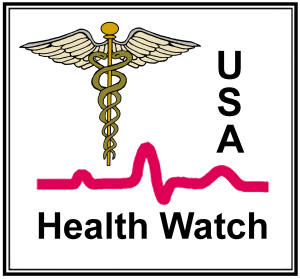
Noel Eldridge - July 17, 2025
A Quick Introduction to the CMS
Hospital Compare Website
This presentation by Noel Eldridge introduces the CMS Care Compare
website, a tool that allows users to view and compare quality data for
hospitals across the United States. The site focuses on various measures
such as complications, deaths, infections, and patient feedback, but
interpreting these metrics can be complex due to differing definitions,
risk adjustments, and the structure of the data. (Description and Key
Topics are AI Generated) Health Watch USA Meetingsm -- July
16, 2025.
https://youtu.be/L5F00llqEEI
Key topics covered include:
• The website covers data for over 4,000 hospitals and allows users to
compare up to three at a time by location and performance measures.
• Key hospital quality measures discussed are complication rates from
hip/knee replacements, serious treatable complications after surgery,
and several types of healthcare-associated infections.
• Understanding these measures is challenging because of how data is
presented—often as risk-adjusted ratios, not straightforward rates—and
because of differences in patient populations (Medicare Fee-for-Service
vs. Medicare Advantage).
• Patient Safety Indicators (PSIs) and composite scores, especially
those developed by AHRQ, are central to the data, but naming conventions
and denominators vary, making direct comparisons tricky.
• The presentation highlights large variations in Medicare patient data
across states and counties, which impacts how representative the quality
measures are for any given hospital.
• Interpreting hospital quality data requires careful attention to
denominators, risk adjustments, and the context of each metric.
• There is concern about future changes to data and measurement as
federal agencies face potential funding and organizational changes.
In summary, while the CMS Care Compare website provides a wealth of
information on hospital quality, fully understanding and using this data
requires careful, nuanced interpretation due to its complexity and the
variability in healthcare populations.
Key Points include:
· Lead exposure is associated with over 185,000 coronary heart disease
deaths annually in the U.S.
· Air pollution and smoking are significant contributors to
cardiovascular disease.
· Population strategies, such as reducing environmental pollutants and
promoting public health initiatives, are more effective and
cost-efficient than individual clinical approaches.
The speaker concludes with a call to prioritize preventive measures and
collective control over addressing individual behaviors, arguing that
tackling root environmental and corporate issues can profoundly improve
public health outcomes worldwide.
Dr. Lanphear can be followed on Substack at:
https://substack.com/@brucelanphear
All information contained on this website is the express opinion /span> strong>strong>
of the presentor and not necessarily that of
Health Watch USA Inc. a Kentucky Non-Profit Organization
The Video Above is a Health Watch USAsm Video.
Health Watch USA is a non-profit 501-C3 Organization based in Kentucky